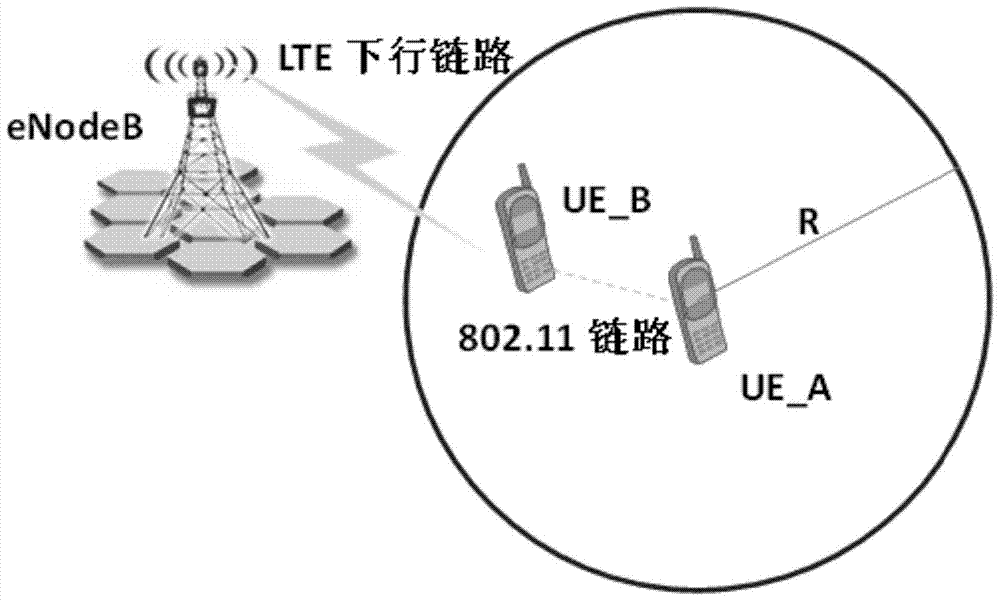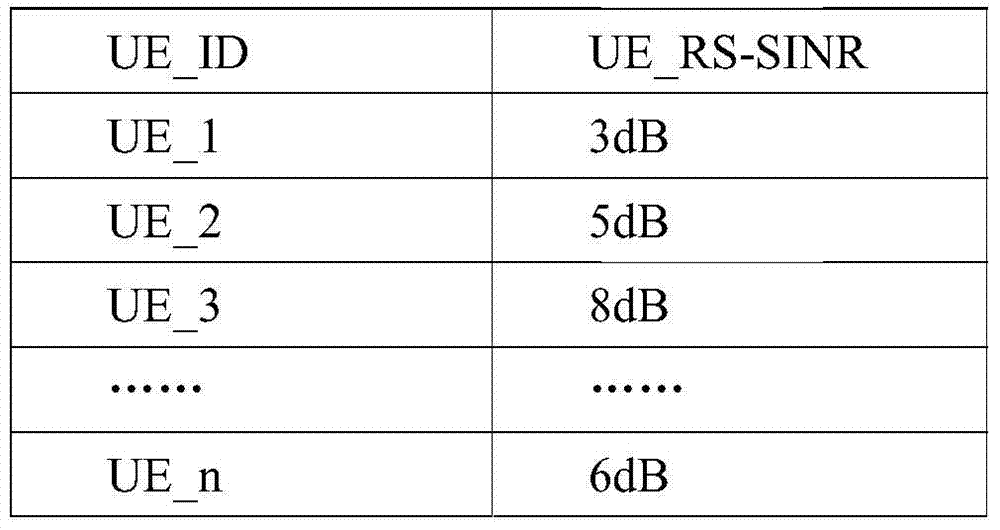A method for scheduling LTE resources
A resource scheduling and target technology, applied in the field of communication, can solve the problems of inability to make full use of high-quality channel network quality, high transmission rate, low transmission rate, etc., and achieve the effect of improving downlink throughput rate, high data throughput rate, and increasing network capacity.
- Summary
- Abstract
- Description
- Claims
- Application Information
AI Technical Summary
Problems solved by technology
Method used
Image
Examples
Embodiment
[0036] figure 1 In , assuming that the RS-SINR value of UE_A is less than the set threshold value (set to 3dB), UE_A queries the neighbor list to obtain the RS-SINR values of all UEs in the area with a radius of R (set to 20m). When it finds that the RS-SINR value of UE_B is optimal, an 802.11 link is established between the two, and the eNodeB is notified to send the required data to UE_B. After receiving the data from the eNodeB, UE_B forwards the data to UE_A through the pre-established 802.11 link. In this process, UE_B plays the role of relay.
[0037] figure 2 , each UE maintains a neighbor node list with a radius of R (set to 20m), which consists of two fields, UE_ID (neighbor UE ID) and UE_RS-SINR (reference signal-to-noise ratio). When the RS-SINR of the UE is lower than the threshold value, it is necessary to select a relay node with a better RS-SINR value in the neighbor list, and encapsulate the UE_ID of the relay node in the MAC layer and report it to the eN...
PUM
 Login to View More
Login to View More Abstract
Description
Claims
Application Information
 Login to View More
Login to View More - R&D
- Intellectual Property
- Life Sciences
- Materials
- Tech Scout
- Unparalleled Data Quality
- Higher Quality Content
- 60% Fewer Hallucinations
Browse by: Latest US Patents, China's latest patents, Technical Efficacy Thesaurus, Application Domain, Technology Topic, Popular Technical Reports.
© 2025 PatSnap. All rights reserved.Legal|Privacy policy|Modern Slavery Act Transparency Statement|Sitemap|About US| Contact US: help@patsnap.com



